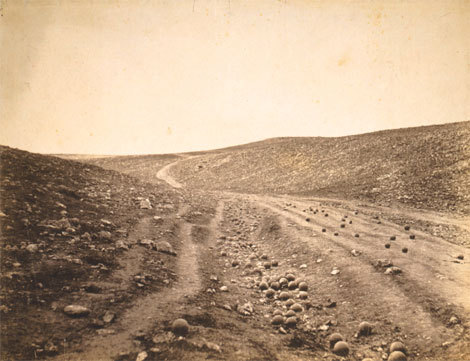It is the autumn of 1857 and Roger Fenton, pioneering photographer, is out in the field. To be precise, he is perched on a bridge overlooking a gorge in North Wales, gauging the correct exposure time for his large and cumbersome box camera to capture not only the jagged rocks in the river just below him, but also an expanse of dark woodland in the middle distance, and the sunstruck mountains in the hazy air on the far horizon. A slight degree of white-out, where the bright sky touches their peaks, is not only acceptable but positively desirable. It will lend the picture an elemental quality, a certain necessary sublimity and grandeur. Not for nothing is Mr Fenton renowned, in leading photographic circles, as the Turner of the modern camera apparatus.
He courts such comparisons. In order to emphasise the scale of the landscape, and suggest the appropriate human response to it, he has persuaded a young man – whose trouser legs are still evidently wet from his exertions – to scramble down on to one of the rocks in the fast-moving river. He stands there, with his back to the camera, doing a passable impersonation of a solitary walker overawed by the majesty of the natural world. In fact, this modern-day Rousseau is none other than Fenton’s long-suffering assistant, , Marcus Sparling (“Sparling”, his employer calls him, as if he were a butler or batman). Due to the necessary long exposure time, the water that swirls beneath the young man’s feet will come out so blurred in the resulting photograph as to resemble a softly flowing expanse of white silk.
Glyn Llledr, from Pont-y-Pant, is one of around a hundred pictures brought together at Tate Britain to celebrate the brilliant, albeit regrettably short career of Roger Fenton –...

Roger Fenton at Tate Britain 2005
25-09-2005

